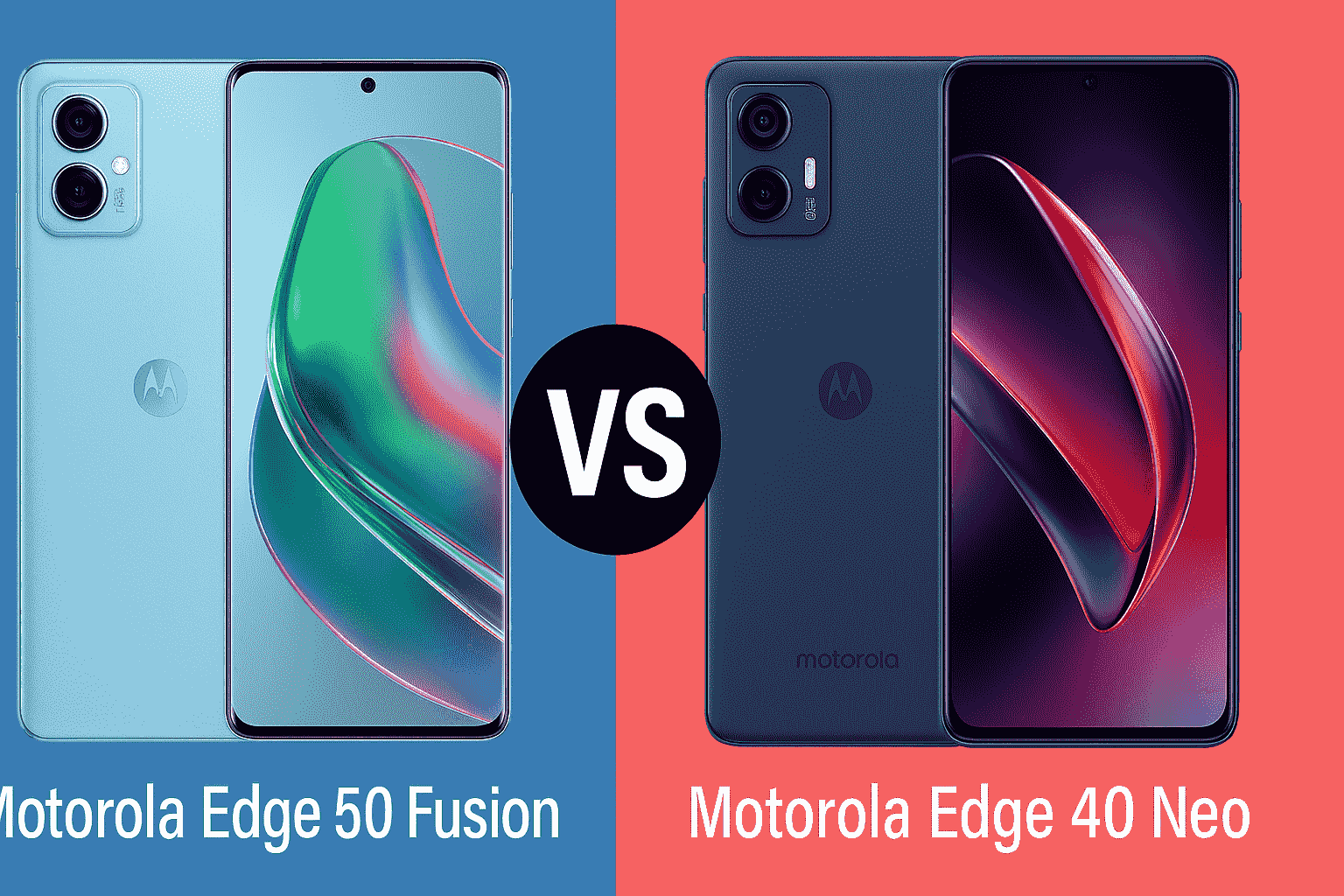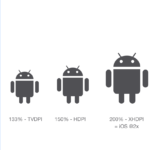When it comes to choosing a mid-range smartphone that balances performance, design, and value, Motorola has stepped up its game in 2024. In particular, the Motorola Edge 50 Fusion vs Motorola Edge 40 Neo debate is gaining attention among tech enthusiasts and budget-conscious buyers alike. These two devices represent Motorola’s evolving strategy—offering premium features at competitive prices. But which one should you choose? Is the newer Edge 50 Fusion worth the upgrade, or does the Edge 40 Neo still hold its ground?
In this comprehensive guide, we’ll dive deep into every aspect of these two smartphones: from design and display to performance, camera capabilities, battery life, and overall user experience. Whether you’re shopping for your next phone or just a curious tech aficionado, this side-by-side analysis will help you make the right decision.
Table of Contents
Introduction to the Edge Series
Design & Build Quality
Display Comparison
Performance and Hardware
Camera Showdown
Software and Features
Battery Life and Charging
Connectivity and Extras
Pricing and Value for Money
Final Verdict
1. Introduction to the Edge Series
Motorola’s Edge lineup has been a refreshing addition to the Android mid-range market. It combines aesthetic finesse with near-flagship features, making it attractive to users who want a stylish phone without breaking the bank. The Motorola Edge 40 Neo, launched in late 2023, became a surprise hit with its sleek build, capable processor, and excellent OLED display. Fast forward to 2024, the company released the Motorola Edge 50 Fusion—an upgraded sibling promising improved performance, refined design, and better cameras.
But how do these two devices really stack up against each other?
2. Design & Build Quality
Motorola Edge 50 Fusion:
Materials: Aluminum frame, Gorilla Glass front, vegan leather or acrylic back.
Dimensions: Slimmer profile (about 7.9mm thick).
Weight: Approx. 175g.
Colors: Marshmallow Blue, Hot Pink, and Forest Blue.
Motorola Edge 40 Neo:
Materials: Plastic frame, glass front, and Pantone-certified vegan leather back.
Dimensions: Slightly chunkier but comfortable in hand (7.8mm).
Weight: Lighter at 170g.
Colors: Soothing Sea, Caneel Bay, and Black Beauty.
Both phones look and feel premium, with vibrant, youthful colors that target a style-conscious audience. The Edge 50 Fusion, however, feels more refined and sturdy in the hand thanks to its upgraded build and Gorilla Glass protection.
Design Winner: Motorola Edge 50 Fusion for its improved materials and premium finish.
3. Display Comparison
Edge 50 Fusion:
Type: 6.7-inch pOLED
Resolution: Full HD+ (2400 x 1080)
Refresh Rate: 144Hz
HDR Support: Yes, with HDR10+ and DCI-P3
Brightness: Peak up to 1600 nits
Edge 40 Neo:
Type: 6.55-inch pOLED
Resolution: Full HD+ (2400 x 1080)
Refresh Rate: 144Hz
HDR Support: HDR10+
Brightness: Peak up to 1300 nits
While both devices offer crisp visuals, vibrant colors, and high refresh rates, the Edge 50 Fusion wins with a larger screen and higher brightness, offering better visibility outdoors and more immersive content viewing.
Display Winner: Motorola Edge 50 Fusion—better for gaming and video streaming.
4. Performance and Hardware
Edge 50 Fusion:
Processor: Qualcomm Snapdragon 7s Gen 2 (4nm)
RAM: 8GB or 12GB
Storage: 128GB / 256GB UFS 2.2
GPU: Adreno 710
Edge 40 Neo:
Processor: MediaTek Dimensity 7030 (6nm)
RAM: 8GB / 12GB
Storage: 128GB / 256GB UFS 2.2
GPU: Mali-G610 MC3
The Snapdragon 7s Gen 2 on the Edge 50 Fusion edges out the Dimensity 7030 in multi-core performance, thermal efficiency, and gaming capabilities. Benchmark scores show the Fusion handles multitasking and graphic-intensive apps with more fluidity.
Performance Winner: Motorola Edge 50 Fusion for its more efficient Snapdragon chip.
5. Camera Showdown
Motorola Edge 50 Fusion:
Main Camera: 50MP (Sony IMX882, f/1.88, OIS)
Ultra-wide: 13MP (120° FOV)
Front Camera: 32MP
Video: Up to 4K at 30fps (rear), 1080p at 60fps (front)
Motorola Edge 40 Neo:
Main Camera: 50MP (Omnivision sensor, OIS)
Ultra-wide: 13MP
Front Camera: 32MP
Video: 4K at 30fps (rear), 1080p for front
On paper, the camera specs seem nearly identical, but real-world performance differs. The Edge 50 Fusion uses a more advanced Sony sensor, delivering sharper details, better low-light performance, and natural colors. The selfie camera also has improved HDR handling and clarity.
Camera Winner: Motorola Edge 50 Fusion—noticeably better imaging quality.
6. Software and Features
Both Devices:
OS: Android 14 (MyUX)
Moto Features: Peek Display, Gestures (chop to torch, twist to camera)
Updates: 2 years of OS updates, 3 years of security patches
The experience is clean and close to stock Android, with Motorola’s smart tweaks. The Edge 50 Fusion ships with the latest version of Android, giving it a head start in terms of security and UI enhancements.
Software Winner: Tie—both deliver near-stock Android with thoughtful extras.
7. Battery Life and Charging
Motorola Edge 50 Fusion:
Battery: 5000mAh
Charging: 68W TurboPower (0 to 50% in ~18 min)
Motorola Edge 40 Neo:
Battery: 5000mAh
Charging: 68W TurboPower (similar charging times)
While both phones offer the same battery capacity and charging speed, the Edge 50 Fusion offers slightly better battery optimization due to its Snapdragon processor.
Battery Winner: Edge 50 Fusion for marginally longer screen-on time.
8. Connectivity and Extras
Edge 50 Fusion:
5G: Yes, with global band support
Bluetooth: 5.2
Wi-Fi: Dual-band Wi-Fi 6
Audio: Stereo speakers with Dolby Atmos
IP Rating: IP68 (dust and water resistance)
Edge 40 Neo:
5G: Yes
Bluetooth: 5.3
Wi-Fi: Dual-band Wi-Fi 5
Audio: Stereo speakers with Dolby Atmos
IP Rating: IP68
Although Bluetooth 5.3 on the Edge 40 Neo is technically newer, the Wi-Fi 6 support on the Edge 50 Fusion gives it faster, more stable connections—especially in crowded areas.
Connectivity Winner: Edge 50 Fusion—for its Wi-Fi 6 upgrade.
9. Pricing and Value for Money
Motorola Edge 40 Neo:
Starts at approx. $299 USD / ₹24,999
Often on sale with discounts
Motorola Edge 50 Fusion:
Launch price approx. $349 USD / ₹27,999
Still fresh on the market, fewer discounts yet
Both phones deliver excellent value for their price points. However, if you’re on a tight budget, the Edge 40 Neo still holds up very well, especially if found at a discounted price. For buyers wanting slightly better performance and a longer software lifespan, spending the extra on the Fusion is justifiable.
Value Winner: Edge 40 Neo for budget buyers; Edge 50 Fusion for those seeking longevity.
10. Final Verdict
Let’s summarize our Motorola Edge 50 Fusion vs Motorola Edge 40 Neo comparison:
| Feature | Winner |
|---|---|
| Design & Build | Edge 50 Fusion |
| Display | Edge 50 Fusion |
| Performance | Edge 50 Fusion |
| Cameras | Edge 50 Fusion |
| Software | Tie |
| Battery | Edge 50 Fusion (slight) |
| Connectivity | Edge 50 Fusion |
| Value for Money | Edge 40 Neo |
🏆 Overall Winner: Motorola Edge 50 Fusion
The Motorola Edge 50 Fusion is clearly a step up in nearly every category. It’s faster, brighter, better built, and offers superior camera performance. That said, the Edge 40 Neo still provides incredible value, especially for users who are more casual with their smartphone usage.
Whether you’re chasing power and performance or simply looking for a well-rounded device without overspending, Motorola has delivered solid options in both models. The choice ultimately depends on your priorities—but either way, you’re getting a great phone for the price.
For more information related to Phones, visit our link: Android

















Leave a Review